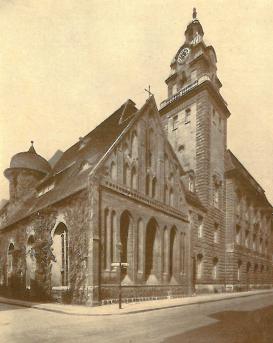Annette Vogt's recent research project investigates the history of statistics at the Berlin University and at the Berlin School of Economics (Handels-Hochschule) from 1886 (1906 resp.) until 1945. Annette wants to study the development of statistics in both fields, in mathematical statistics as well as in economic and social statistics. First, she is interested in the question of how it was taught and by whom at the Berlin University from the late nineteenth until the twentieth century and at the Berlin School of Economics (Handels-Hochschule), which was established in 1906 (from 1935 until 1945 it was named Wirtschafts-Hochschule). Second, Annette Vogt wants to analyze the relations between mathematics (mathematical statistics) and social science (social and economic statistics), including the mathematical courses on insurance problems, from 1886 (1906 resp.) until 1945. The teachers of these topics belonged not only to the staff of the Berlin University and the Berlin School of Economics, but were also employed in different statistical offices which were established in Berlin, and others were working in insurance companies or unions. Third, the project will investigate the links between the academic world and the different statistical offices and to analyze the production and application of scientific knowledge in these fields. Finally, there is a gender aspect: two important female scientists contributed to the development of statistics in Berlin.
The discipline social statistics was well developed in Berlin, from 1886 onwards at the Berlin University—when the Staatswissenschaftlich-statistisches Seminar (economic statistical seminar/institute) was founded—and from 1906 onwards also at the Berlin School of Economics, and in several statistical offices, which were called bureau until late nineteenth century. In 1805 the statistical bureau of the Prussian country (Kgl. Preußisches Statistisches Bureau, 1805–1934) was opened; in 1862 the statistical office of the town Berlin was established (Statistisches Bureau der Stadt Berlin, 1920–1945 von Groß-Berlin)—the first office in a town in Germany—and from 1872 onwards the statistical bureau of the German Empire (Kaiserliches Statistisches Amt, from 1918 until 1945 Statistisches Reichsamt) was established. In comparison, mathematical statistics was developed to a lesser extent. Annette Vogt is interested in the question of why and how this happened, and why these disciplins developed so differently.

